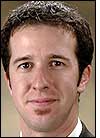After completing a trial of passive low-frequency and UHF RFID tags for cervid tracking, the Colorado Department of Agriculture has determined that active RFID tags may be the only way to gain the 100 percent read rate it seeks for cervid herds in the state. Cervid tracking is more rigorous in Colorado than in some other states because of a state mandate requiring ranchers to test dead elk and fallow deer for CWD, or chronic wasting disease. CWD is part of a group of ailments known as transmissible spongiform encephalopathies, which includes mad cow disease. If an animal decomposes before being tested, neither ranchers nor the state can determine if it died of the lethal and contagious disease.
In the most recent of two Colorado cervid pilots—using passive UHF RFID tags and interrogators (readers) made by Advanced ID Corp.—the state’s agriculture department was able to read 100 percent of the tags on one of the three herds tested, but considerably less on the other two, says Scott Leach, the department’s CWD field investigator. The first pilot, which took place in late 2004 and early 2005, involved low-frequency tags (134.2 kHz) and readers, with hardware supplied by Digital Angel, Allflex, Y-tex and Avid Identification Systems. The second, a nine-month trial held from March to December 2005, used Advanced ID’s UHF (915 MHz) tags and interrogators.
Under the National Animal Identification System (NAIS) mandate, currently being developed by the United States Department of Agriculture (USDA), all cervid ranchers in the United States will be required to inventory their animals using RFID or some other method. No specific date for compliance has yet been determined. They can also use RFID tracking to keep a record of their herd’s general health, nutrition and other activities. Ranchers in Colorado also need to be able to recognize when an animal is missing and, if the animal has died, locate its body before it decomposes—for CWD testing.
Leach says he has not yet tried to use a passive RFID system to track an animal, live or dead. He adds, however, that active RFID equipment manufacturers have indicated tracking of animals may be possible. In the meantime, passive RFID systems allow the ranchers to recognize the loss of an animal and search for it.
Reading tags on elk is uniquely challenging because the animals resist being run through chutes, where they could pass an RFID reader at close range. Elk are often skittish around humans, even ranchers with whom they are familiar. Places in Colorado where captive cervids live include 1,000- to 2,000-acre fenced-in hunting ranches, Leach says, where it is very difficult to get within read range of the handheld UHF interrogators used in the trial. Such readers have a range of about 3 meters, or slightly less than 10 feet. “When you have large bulls with full antler racks in rutting season, you don’t want to be too near [them],” Leach says.“From the perspective of being able to read every cervid you can get within 10 feet of, we’re there,” says Advanced ID’s president and CEO, Dan Finch. In fact, the company’s 915 MHz tag system, DataTag, is already in use at a number of cervid ranches, as well as at several cattle and pig farms. “However, when you have elk that never come closer than 100 feet, you have to use a stationary reader,” Finch explains.
Advanced ID stationary readers are being piloted to track cervids in New York State, installed near food troughs, water and salt licks (see N.Y. Tests RFID on Domestic Deer). Leach says he may consider stationary readers as a solution in Colorado as well, but also intends to test an active RFID tag system in the coming months to see if the increased read range would improve results. The biggest issue in that case, according to Finch, is the price, which is likely to be considerably higher for active tags. Advanced ID does not currently provide active tag systems, but might do so if it sees significant commercial interest, Finch says.
Leach has been in contact with active RFID manufacturers Cattle Traq and Smart Ag Tag for the next trial, which he hopes to begin within a month. Just how long the read range will be may depend on the terrain, Leach says. However, both companies indicated their stationary interrogators can read up to a mile, while the handheld units vary from 600 feet to a half-mile.
Leach says that during a one-day inventory (part of the passive UHF RFID trial), he was able to read 100 percent of the cervids’ tags at one small ranch, 24 percent at a second and 50 percent at a third. The animals were particularly skittish around those taking the inventory at the second ranch. The initial goal was to test whether UHF tags and readers would have a longer read range than the previously piloted low-frequency system. “They did,” Leach says. “It was a matter of feet, rather than inches.”
Colorado has about 100 cervid ranches, with a total of 6,000 or so captive elk and deer. Animals on small ranches can probably be inventoried by hand, Leach says, but when that is not possible, “electronic tracking is the way to go.” Thus far, he says, he hasn’t found anything better than RFID—though he has considered bar-coded animal tags (which require a clear line of sight between the bar code and the scanner), GPS (which is expensive) and retinal scans (which fail after the animal dies).



